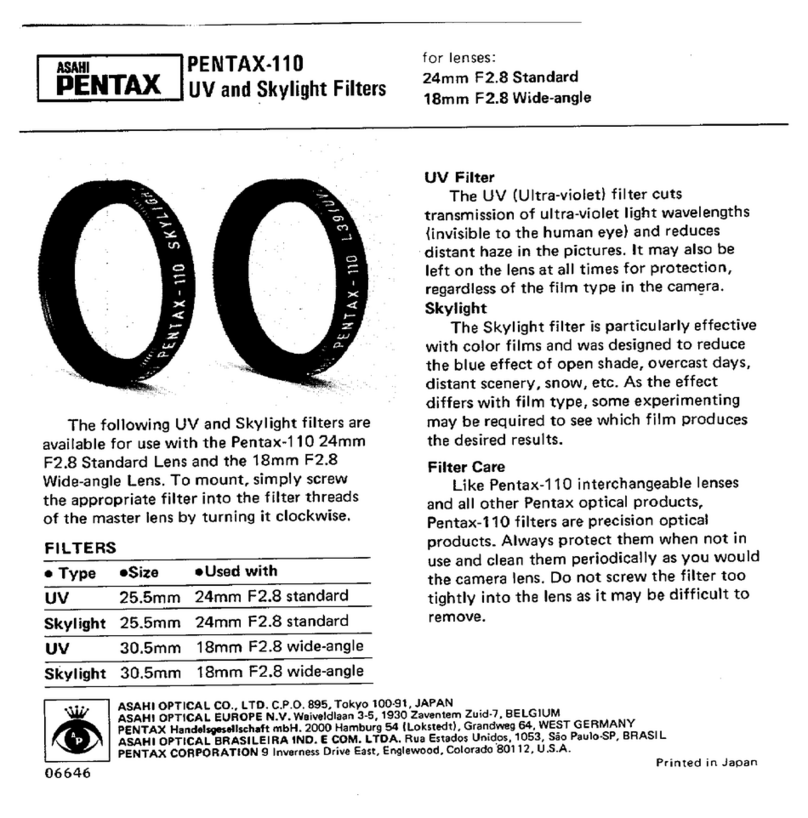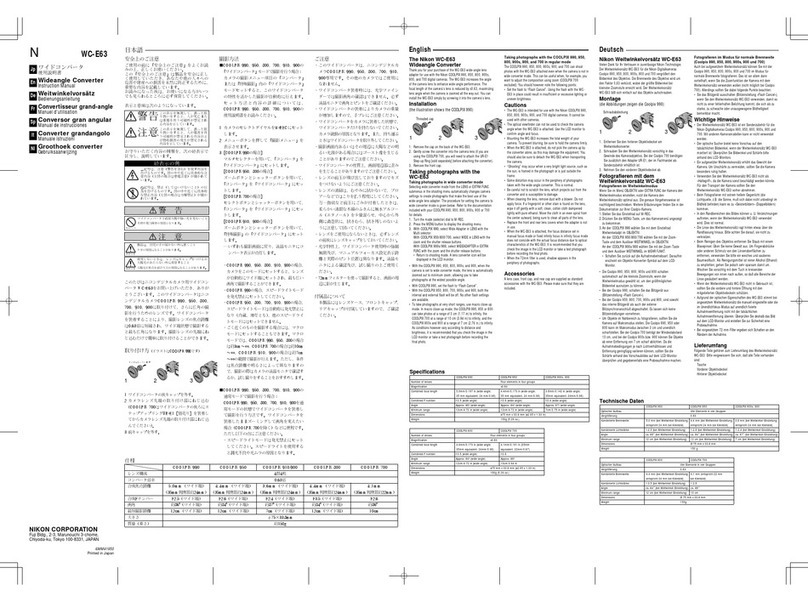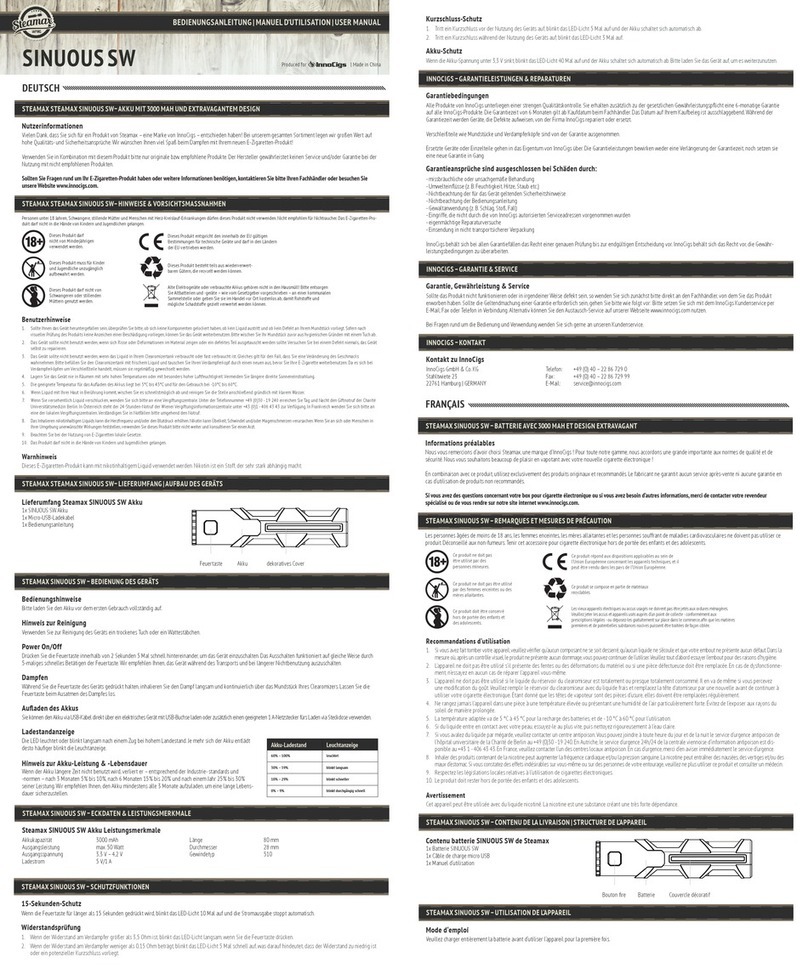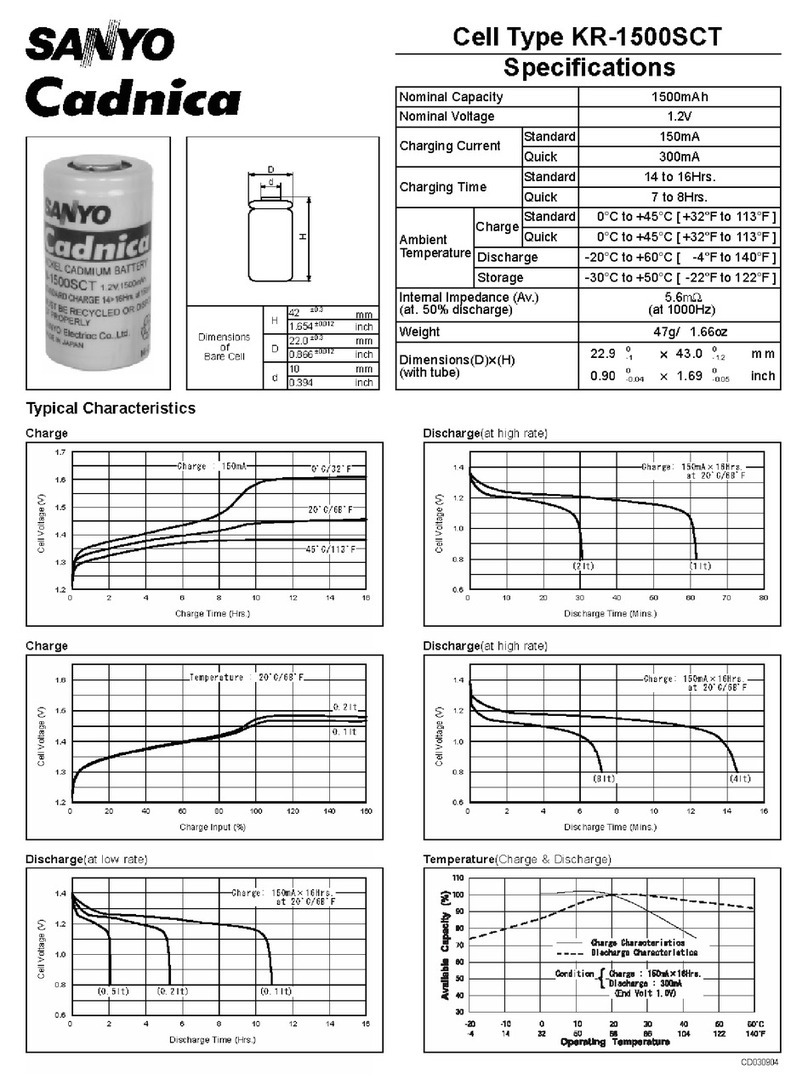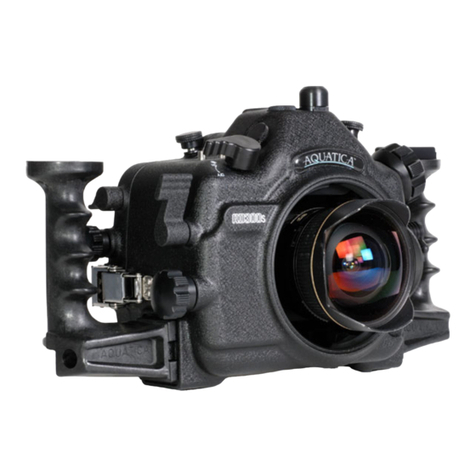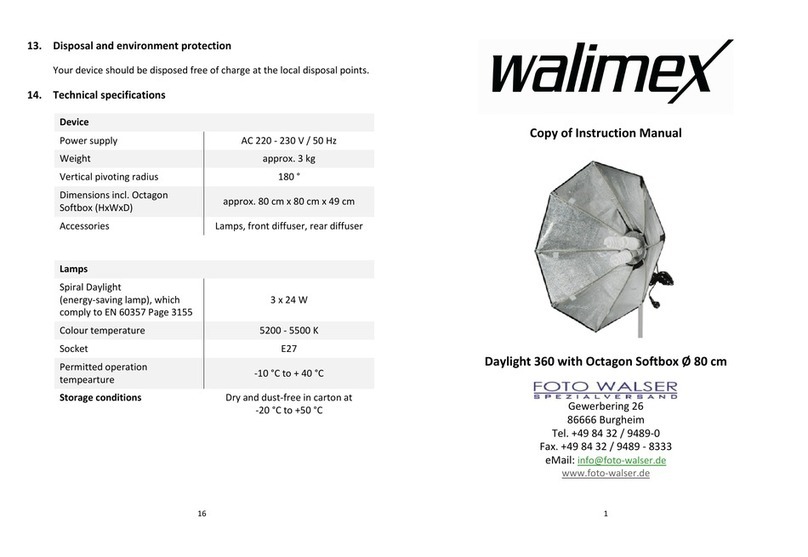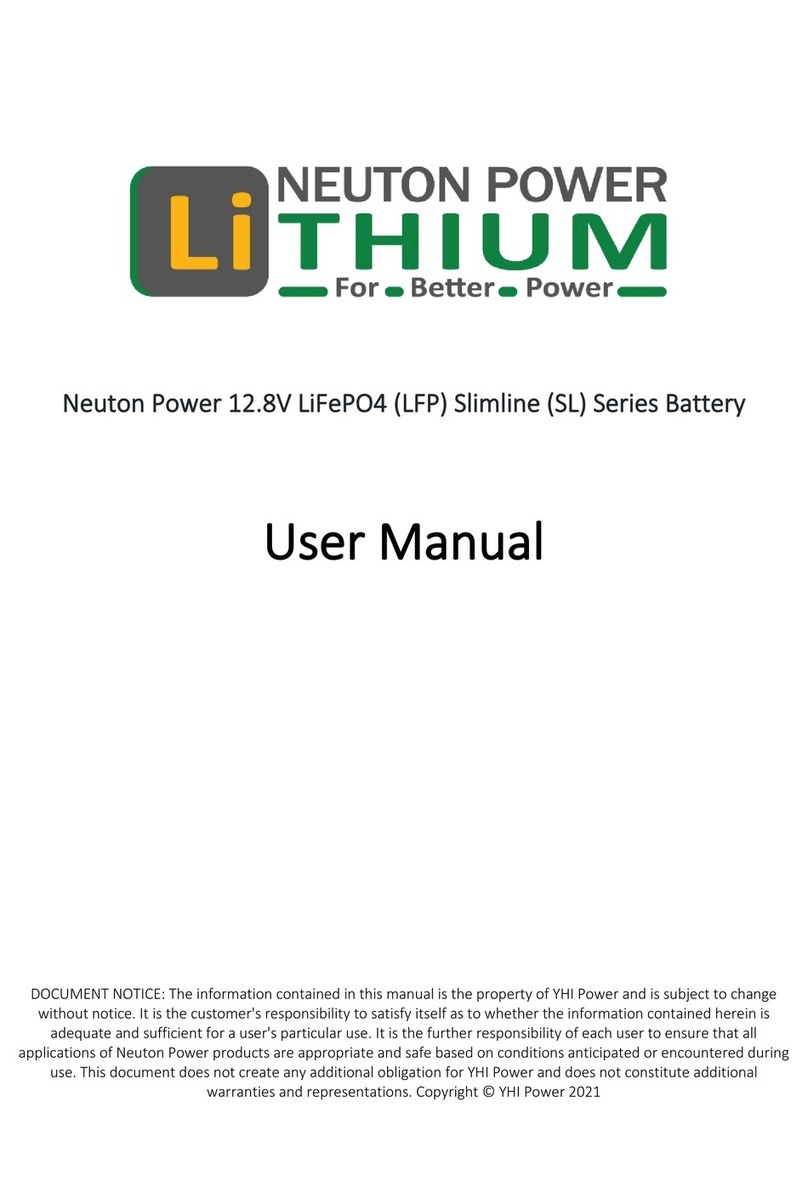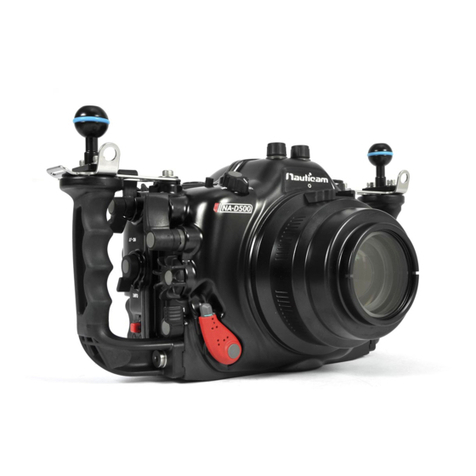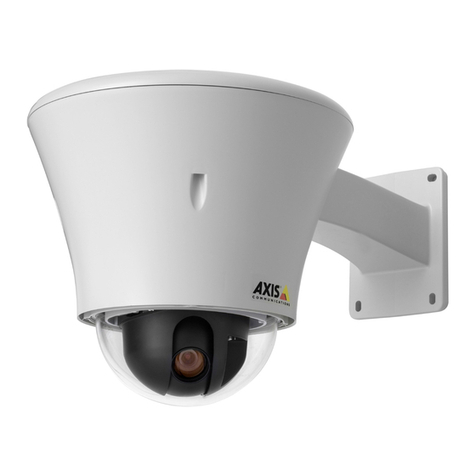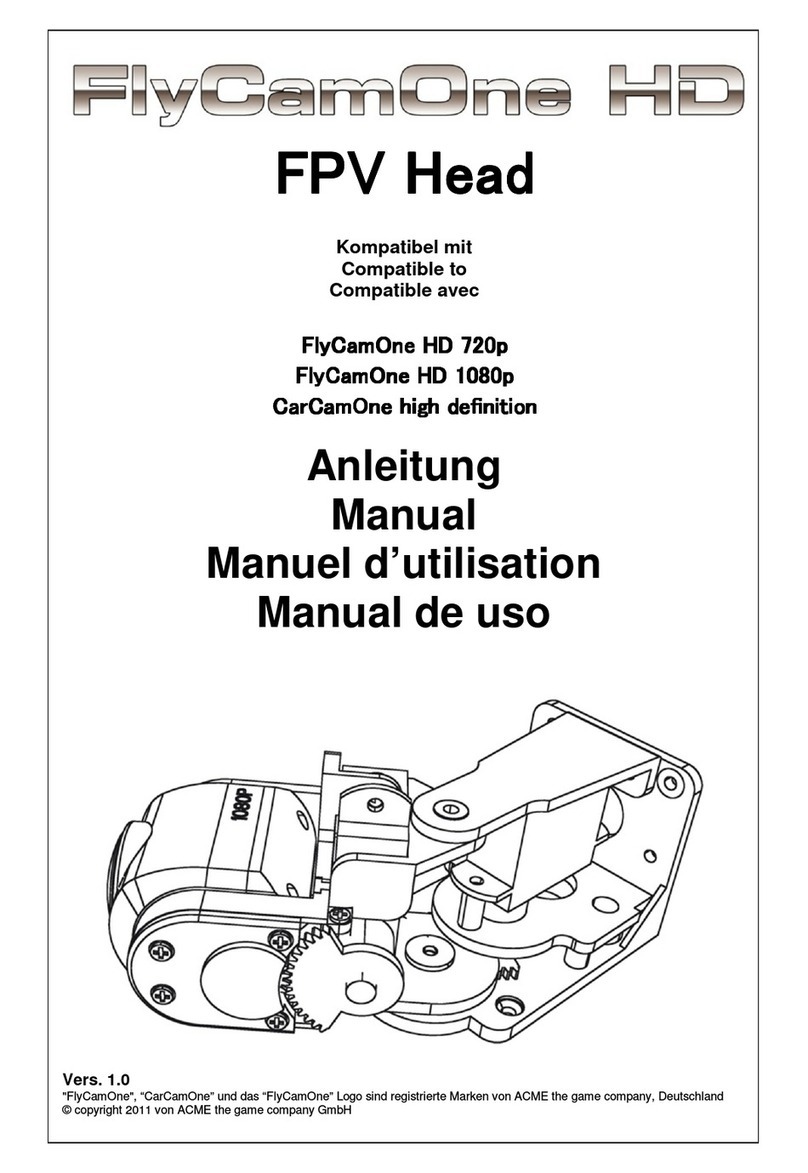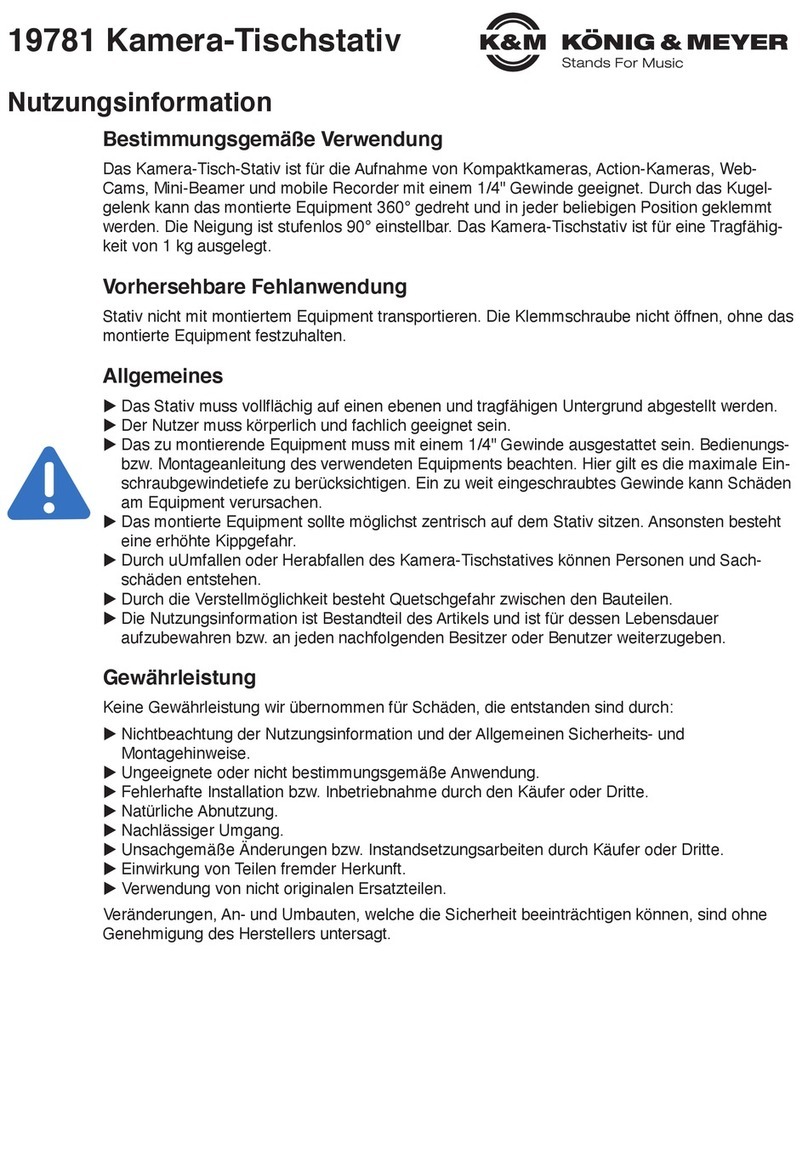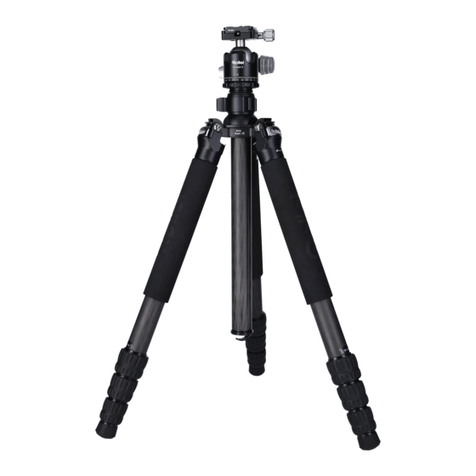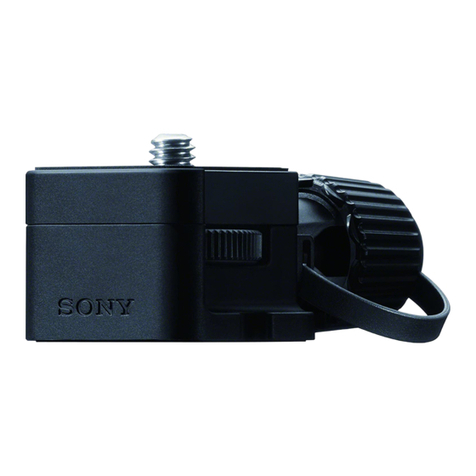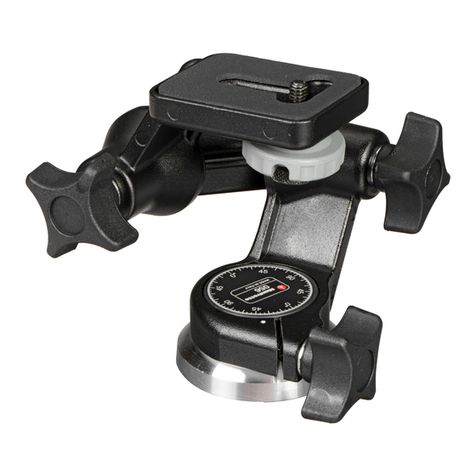Stealth SP-HEHV27 Series User manual

- 1 -
Rechargeable Li-ion Battery System
SP-HEHV27 Series Operation Manual
Version: A0

- 2 -
Catalogue
1. Safety.......................................................................................................................................... - 1 -
1.1 Symbol Description ...........................................................................................................- 1 -
1.2 In use ................................................................................................................................ - 3 -
1.3 Before wiring.................................................................................................................... - 3 -
2.System introduction.................................................................................................................... - 4 -
2.1 Product description ..........................................................................................................- 4 -
2.2 Technical parameters........................................................................................................- 4 -
2.2.1 System parameters................................................................................................- 4 -
2.2.2 Battery modules(SP-HE10227)........................................................................ - 5 -
2.2.3 High Voltage Battery Controller(SP-HVC600)..................................................- 7 -
2.3 System schematic.............................................................................................................- 9 -
3.Installation Notes...................................................................................................................... - 10 -
3.1 Tools................................................................................................................................- 10 -
3.2 Safety equipment........................................................................................................... - 10 -
3.3 System operating environment check............................................................................- 10 -
3.3.1 Cleaning up of the environment......................................................................... - 10 -
3.3.2 Installation Environment Requirements.............................................................- 11 -
3.3.3 Fire extinguisher system......................................................................................- 12 -
3.3.4 Grounding system............................................................................................... - 12 -
3.4 Handling and placement................................................................................................ - 12 -
3.5 System installation......................................................................................................... - 13 -
3.5.1 Grouping..............................................................................................................- 13 -
3.5.2 Side cover removal..............................................................................................- 13 -
3.5.3 Stacking and fixing of battery modules.............................................................. - 13 -
3.6 Wiring............................................................................................................................. - 16 -
3.6.1 Wiring harness.................................................................................................... - 17 -
3.6.2 Battery system wiring diagram........................................................................... - 18 -
3.6.3 Battery system grounding wiring ........................................................................ - 21 -
3.6.4 Inverter terminal wiring...................................................................................... - 22 -
3.6.5 Parallel wiring diagram between battery systems..............................................- 22 -
3.7 Battery system power on............................................................................................... - 23 -
3.8 Battery system shutdown...............................................................................................- 24 -
4. System debugging.....................................................................................................................- 24 -
5.Maintenance..............................................................................................................................- 25 -
5.1 Troubleshooting..............................................................................................................- 25 -
5.2 Replacement of main spare parts..................................................................................- 26 -
5.2.1 Replacement of battery modules....................................................................... - 26 -
5.2.2 Replacement of battery controller......................................................................- 26 -
6.Storage advice........................................................................................................................... - 27 -
7.Shipment....................................................................................................................................- 27 -
Attachment 1: Installation and System Startup Schedule ........................................................... - 28 -
Attachment 2: System Shutdown Schedule.................................................................................- 29 -

- 1 -
1. Safety
SP-HEHV27 series is a high voltage DC system and is to be operated by
skilled/qualified personnel only. Read all safety instructions carefully before doing
any work and always follow them when using the system.
Improper operation or work can cause
Injury or death of the operator or a third party;
Other property of the operator or the third party is damaged;
The system hardware is damaged.
Qualified Person's Skills
Qualified individuals must possess the following skills:
Training in electrical system installation and commissioning and hazard
handling;
Learn about this manual and other related documents;
Understand local regulations and directives。
1.1 Symbol Description
Symbol
Description
DANGER!
Connecting batteries in series will generate high-voltage
direct current with risk of electric shock and fatality。
Only qualified personnel should wire the battery。
WARNING!
Do not unplug the connector while the system is
working!
When shutting down the system, cut off multiple power
supplies and confirm that there is no voltage.
ATTENTION!
Battery system failure or reduced service life.
There is a potential risk when the device is in operation.
Take precautions when operating the equipment.
High voltage is present when the device is operating. When
working on the device, confirm that the device is powered
off。
Before operating the equipment, please read the product
manual carefully.

- 2 -
At the end of the life of the device, do not dispose of it with
household waste.
CE certification mark.
Grounding symbol.
Keep the device away from open flames or sources of
ignition.
Equipment should be kept out of reach of children.
Non-professionals are prohibited from disassembling the
equipment.
It is forbidden to short-circuit the positive and negative
poles of the battery.
Do not pour water on a runaway battery.
Equipment should be recycled in accordance with local
environmental regulations.
Safety certification label from TÜV SÜD.
Danger
Danger: Short circuit or incorrect installation of battery may cause burn or fire
hazard.
Danger: Lethal voltage in battery terminals and cables. Serious injury or death
may result if cables and terminals are touched.

- 3 -
Warning!
Do not open or deform the battery module, otherwise the product will be out
of warranty
WARNING: Appropriate personal protective equipment (PPE) such as rubber
gloves, rubber boots and goggles should be worn when working with batteries.
Warning: System operating temperature range: 0℃~45℃, exceeding the
operating temperature range may cause the battery system temperature to be
too high/low , which will further shorten the cycle life。
For battery installation, the installer should strictly abide by the installation
operation standards.
Improper maintenance can permanently damage the battery。
Incorrect inverter parameters will further lead to battery failure/damage。
Attention!
Before installing or using the battery, it is very important and necessary to read
the user manual (included in the attachment) carefully. Failure to do so or to
follow any instructions or warnings in this document may result in electric
shock, serious injury or death, or damage to the battery, possibly rendering it
inoperable。
If the battery is stored for a long time, it is required to be charged every six
months, and the SOC should not be lower than 90%;
The battery needs to be charged within 12 hours after being fully discharged;
Do not expose cables to the outside;
1.2 In use
If the battery system needs to be moved or serviced, the power must be
disconnected and the battery turned off completely;
It is forbidden to connect the battery with a different type of battery;
Do not use the battery with a faulty or incompatible inverter;
Do not remove the battery modules;
In the event of a fire, only dry powder fire extinguishers can be used, liquid fire
extinguishers are prohibited;
1.3 Before wiring
After unpacking, please check the product and packing list first, if the product
is damaged or missing parts, please contact your local retailer;
Before installation, make sure to cut off mains power and make sure the

- 4 -
battery is in off mode;
The wiring must be correct, the positive and negative cables must not be
wrongly connected, and there is no short circuit with external equipment;
Do not connect the battery directly to AC power;
The battery system must be well grounded and the resistance must be less
than 4Ω;
Please ensure that the electrical parameters of the battery system are
compatible with the related equipment;
Keep batteries away from water and fire。
2.System introduction
2.1 Product description
SP-HEHV27 series energy storage battery system is mainly composed of battery
module (SP-HE10227) and control box (SP-HVC600).
The battery system can be used with single-phase high-voltage energy storage
inverter and three-phase energy storage inverter.
The configuration of each battery system model is as follows:
System model
Number of battery modules
Number of control boxes
SP-HE10227-H
1
1
SP-HE20427-H
2
1
SP-HE30727-H
3
1
SP-HE40927-H
4
1
SP-HE51227-H
5
1
2.2 Technical parameters
2.2.1 System parameters
Product model
SP-HEHV27
Number of battery modules
1
2
3
4
5
System models
SP-HE10227-H
SP-HE20427-H
SP-HE30727-H
SP-HE40927-H
SP-HE51227-H

- 5 -
Battery module model
SP-HE10227
Battery type
LFP
Capacity(kWh)
2.76
5.53
8.29
11.05
13.82
Nominal voltage (Vdc)
102.4
204.8
307.2
409.6
512
Voltage range (Vdc)
80~115.2
160~230.4
240~345.6
320~460.8
400~576
Dimension (mm)
L
640±5
W
220±5
H
380±5
660±5
940±5
1220±10
1500±10
weight(kg)
30.5±1
57.5±1
84.5±1
111.5±1
138.5±1
Depth of discharge
95%
Working
current(A)
Rated
27
MAX
30
Peak@15s
33
Rated DC power(W)
2160
4320
6480
8640
10800
Prospective DC fault current (A)
1440
Communication method
RS485/CAN
Protection class
IP65
Operating temperature
0℃~45℃
Storage temperature
Recommend:-10℃~30℃
Humidity
5~95%
Design life
10Years(25℃)
Cycle life
>6000(25℃)
Certification
IEC62619/CE/UN38.3
*Unpacked products can be stored at an ambient temperature of - 20 ℃~60 ℃, but
high temperature storage will lead to capacity degradation.
2.2.2 Battery modules(SP-HE10227)
Battery model
SP-HE10227
Battery type
LFP

- 6 -
Energy (kWh)
2.76
Rated voltage (Vdc)
102.4
Capacity (Ah)
27
Number of cells in series
32
Nominal voltage of cell (Vdc)
3.2
Operating temperature(℃)
0~45
Storage temperature(℃)
-10~30
Dimension (W*D*H, mm)
640*220*280
Weight (kg)
30
Protection class
IP65
NO.
Name
Description

- 7 -
1
BAT+
Positive pole of battery module
2
BAT-
Negative pole of battery module
3
COM1
Communication input
4
COM2
Communication output
5
LED
Battery module status indicator. Green light
flashing: normal; red light on: fault.
6~7
GND/Connector
fixing hole
Grounding/Fixing the connecting piece between
the battery boxes.
8-11
Screw hole
Used to fix the module side cover
12~13
Screw hole
Used to fix L-shaped structural parts. (The
L-shaped structure can fix the battery system to
the wall and prevent the battery system from
tipping over.)
14~15
Connecting piece
fixing hole
The connecting piece between the fixed boxes
2.2.3 High Voltage Battery Controller(SP-HVC600)
Model
SP-HVC600
Supply voltage(V)
32~600
Static power consumption(W)
<2
control loop
2
Insulation detection range(MΩ)
≤10
Operating temperature(℃)
-40~85
Storage temperature(℃)
-40~125
Dimension (W*D*H, mm)
670*200*95
Weight (kg)
4.5
Protection class
IP65
Fault alarm
Buzzer

- 8 -
NO.
Name
Description
1
SOC indicator light
0~25%Capacity.
2
SOC indicator light
25%~50%Capacity.
3
SOC indicator light
50%~75%Capacity.
4
SOC indicator light
75%~100%Capacity.
5
Start switch
System startup.
6
BAT-
Battery module negative input.
7
BAT+
Battery module positive input.
8
COM3
Communication between control box and
battery module.
9
COM4
Battery system parallel communication.
10
COM6
Main control board program update.
11~12
Screw hole
Controller side cover fixing hole.
13~14
Screw hole
Used to fix L-shaped structural parts. (The
L-shaped structure can fix the battery system to
the wall and prevent the battery system from
tipping over.)
#13 is also the system grounding location.
15
Breaker
Used to cut the connection between the battery
and the inverter.
16
COM5
Battery system and inverter communication
17
P+
Positive output port of battery system,
connected to inverter.
18
P-
The negative output port of the battery system
is connected to the inverter.
Start switch
When starting, press the button, the green light flashes and the SOC light is on;
After startup, the system can only enter the standby mode and cannot output
directly. It needs to wait for the inverter to send the contactor pull in command.
When shutting down, press the button again, release the button, and the
button light and SOC light will go out.

- 9 -
Light status
When startup, the green button light flashes; the SOC blue light does not
flash.At this time, the system is in standby mode.
When charging, the green button light flashes; the SOC blue light flashes
clockwise from 25% one by one.
When discharging, the button flashes green; the SOC blue light starts flashing
anti-clockwise from 100% one by one.
When a fault occurs, the button flashes green; the SOC indicator changes from
blue to red。
Communication port definition
RJ45 Port definition
Pin
COM4
COM5
COM6
1
GND
CAN_UP
VCC
2
CAN_DOWN
GND
GND
3
GND
GND
485B
4
CAN_H
CAN_H
5
CAN_L
CAN_L
6
CAN_5VIN
CAN_5V
485A
7
8
2.3 System schematic
Notice: For the AU market, over current and protection devices that isolate the
positive and negative conductors simultaneously will need to be installed between
the battery and the inverter.

- 10 -
3.Installation Notes
3.1 Tools
The following tools are required to install the battery pack:
Wire Cutter
Crimping
Modular Plier
Sleeve Piece
Screw Driver
Electric Screw
Driver
600VDC Multimeter
Notice!
Use properly insulated tools to prevent accidental electric shock or short circuit.
3.2 Safety equipment
The following safety equipment is recommended when handling the battery pack:
Insulated gloves
Safety goggles
Safety shoes
3.3 System operating environment check
3.3.1 Cleaning up of the environment
Before installation, the surrounding area should be made clean of dust and
iron filings.

- 11 -
Before the system is powered on, make sure that there are no flammable and
explosive objects around。
3.3.2 Installation Environment Requirements
System operating temperature range: 0℃~45℃; optimum temperature:
15℃~35℃。
Although there are no forced ventilation requirements for battery systems,
please avoid installation in restricted areas。
High salinity, high humidity or high temperature should be avoided in
ventilated areas。
The battery system needs to be installed indoors. In cold areas, it is necessary
to place the battery in an indoor environment not lower than 0 ℃.
The minimum clearance between the system and the heat source is greater
than 2m.
The system shall not be immersed in water. When installing the battery system,
we suggest that the bottom of the battery system should be 100mm~200mm
higher than the ground.
The ground where the battery system is installed must be able to support the
weight of the whole battery system (35~175kg).
Recommendations for the minimum clearance around the battery system:
more than 400mm at the top, more than 400mm at the left and right sides,
more than 600mm at the front and less than 100mm at the back against the
wall.

- 12 -
3.3.3 Fire extinguisher system
For safety, fire extinguishers must be equipped. Regularly check whether the
fire extinguisher is in normal condition.
It is recommended to choose carbon dioxide, ABC dry powder fire extinguisher
or Helen fire extinguisher.
The fire caused by over temperature of general cables and connectors is
controllable, but there is high voltage, so it is necessary to shut down the
system and then use the fire extinguisher to extinguish the fire.
If the fire is caused by batteries, you must leave the site and call the local fire
department for treatment.
3.3.4 Grounding system
Before installing the battery, make sure that the grounding point in the base is
stable and reliable. If the battery system is installed in a separate equipment
compartment (such as a container), it must be ensured that the grounding of
the compartment is stable and reliable.
The resistance of the grounding system must be measured <4Ω.
3.4 Handling and placement
The power terminal of the battery pack is high-voltage DC, which must be
handled and placed by special personnel.

- 13 -
3.5 System installation
Note: Batteries exist in groups, and the same group number must be selected
during installation. Mixing batteries with different group numbers will affect
the battery performance.
3.5.1 Grouping
The battery module will be divided into different gears according to the battery
capacity. The capacity of different gears is slightly different, but they are within the
normal range of the rated capacity. The battery module composition system of the
same gear can improve the use efficiency of the battery. The gear identification is
shown in the figure below, on the right side of the battery box. The gears are not
limited to ① and ②, and the pictures are for reference only.
3.5.2 Side cover removal
There are 4 holes on the side cover. Insert a screwdriver along the holes to loosen
the screws that fix the side cover. After loosening the 4 screws, lift the side cover
straight.
3.5.3 Stacking and fixing of battery modules
Accessories required for battery module fixing.
Note: Accessories are supplied with the battery pack and do not need to be
purchased separately.
NO.
Name
Figure
1
Fixtures between boxes

- 14 -
2
L-shaped fixings
3
Screw
4
Expansion bolt
The high voltage batteries of the SP-HEHV27 series can be formed into 5
different systems. The way they are stacked and fixed is the same.
The battery box fixing parts are installed, and the left and right sides are
installed symmetrically to ensure a stable installation of the system.

- 15 -
Install the L-shaped fixing between the control box and the battery box. The
opening of the L-shaped fixing is a rectangular hole, which can be adjusted
from 0 to 20mm according to the distance between the battery system and the
wall. The L-shaped fixings are also installed symmetrically from left to right.
After adjusting the position of the battery system, mark the position of the
fixing hole of the L-shaped fixing on the wall.
Remove the L-shaped fixing, remove the control box, and make a hole in the
wall. When drilling holes, cover the battery well.
Drill size: hole diameter 10mm, depth 60mm。

- 16 -
Fix the two L-shaped fixings on both sides of the battery box and the control
box, and then fix them on the expansion bolts on the wall。
3.6 Wiring
DANGER: The battery system is a high-voltage DC system. It must be ensured that
the grounding is secure.
DANGER: All power cable plugs and sockets must not be reversed. Otherwise it will
cause personal injury.
WARNING: Incorrect communication cable connection will cause battery system
failure.

- 17 -
3.6.1 Wiring harness
NO.
Name
Figure
Provided or not
1
Battery positive
input cable
✔
2
Battery negative
input cable
✔
3
Battery positive
output cable
Purchase separately
P/N:201-04029-00
4
Battery negative
output cable
Purchase separately
P/N:201-04030-00
5
Battery series cable
✔
6
Master-slave
communication
cable
✔
7
Communication
cable between
battery modules
✔
8
External
communication
cable
Purchase separately
P/N:201-04034-00
9
Ground cable
Purchase separately
P/N:201-04041-00
Notice:
1. Positive and negative battery output cables are only used for battery to circuit
breaker, circuit breaker to inverter cables are not provided.
2. Cables that can be purchased separately can be purchased from authorized
dealer.

- 18 -
3.6.2 Battery system wiring diagram
Danger: It is forbidden to connect the positive and negative poles of the battery
series cable to the same battery module, otherwise it will damage the battery and
even cause personal injury.
Wiring Diagram for System (SP-HE10227-H) and System (SP-HE20427-H)
Table of contents
